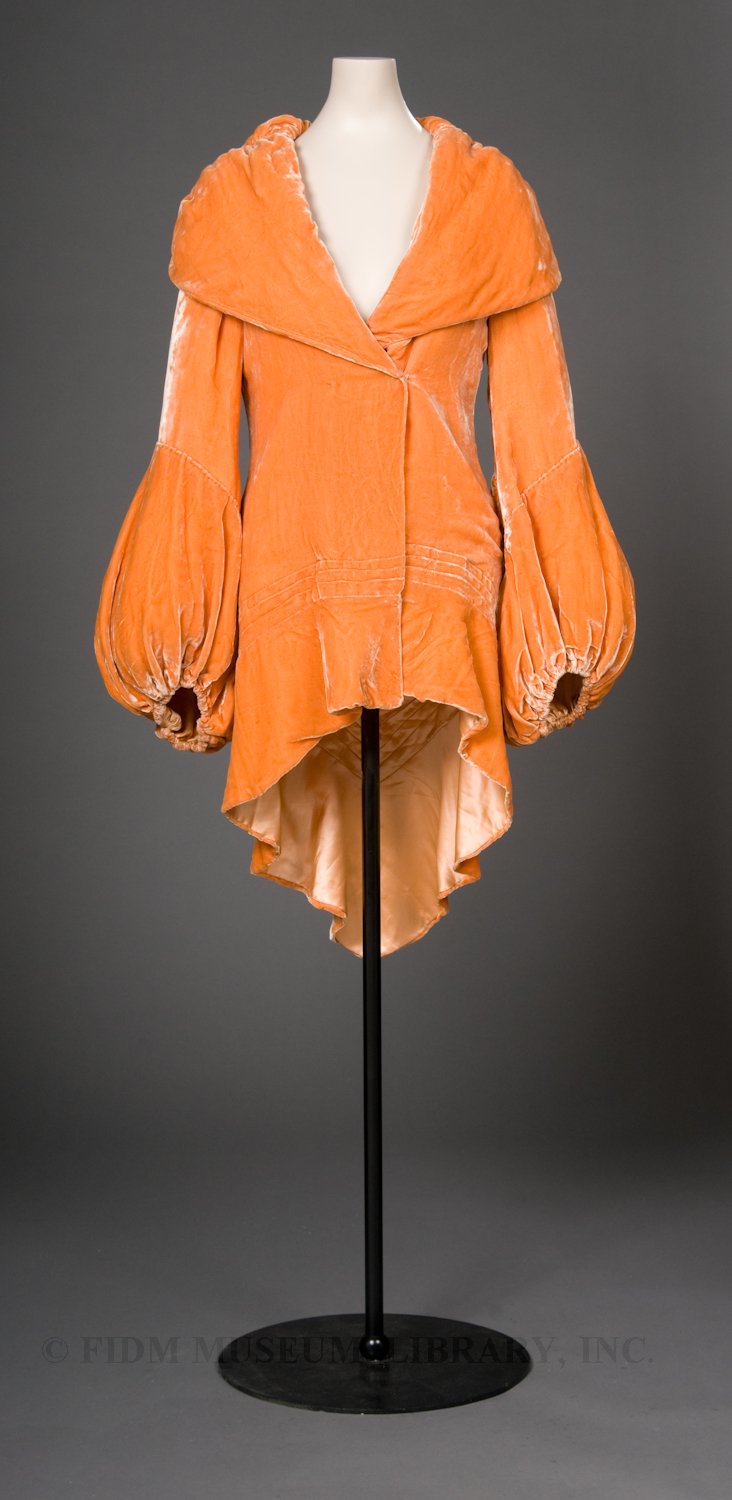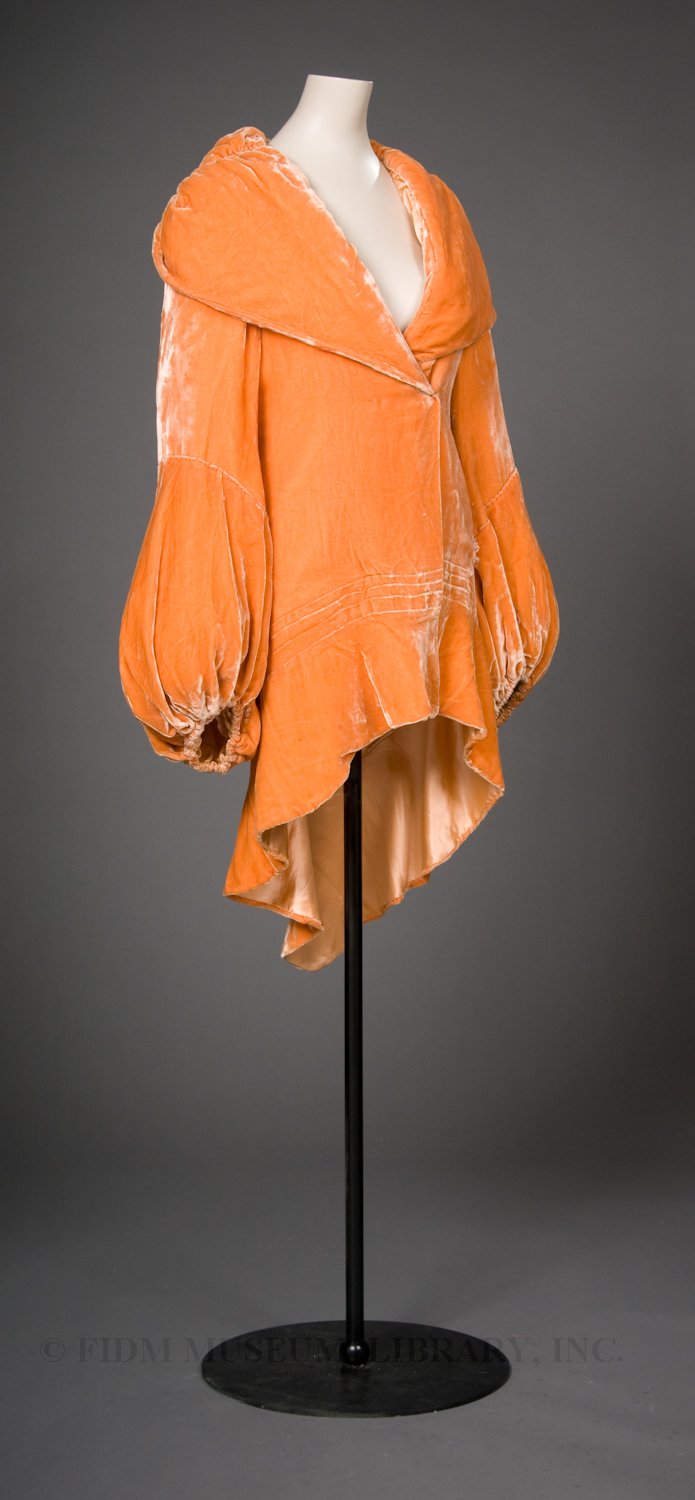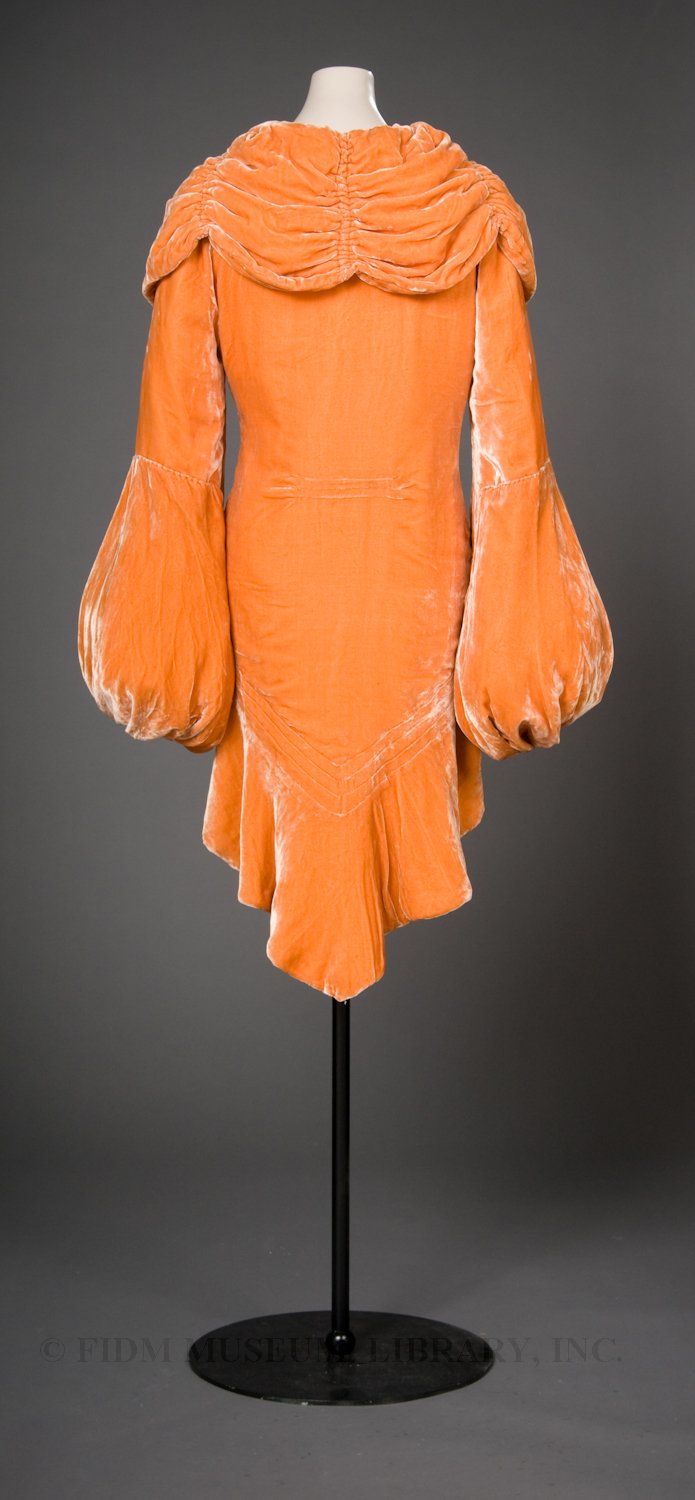Velvet evening coat
Evening gowns of the 1930s were usually floor-length and clung to the body. Made of silk or velvet, they were cut on the bias and often exposed a swath of bare back or shoulder. Of course, this exposure meant that a fashionable evening coat was necessary in the colder months. Though black was encouraged as a practical, wear-with-everything choice, another option would have been an evening coat in an intense shade of purple, raspberry red, bottle green, chartreuse or orange. In person, the FIDM Museum velvet evening coat seen here is an enticing shade of rich, bright orange. During the 1920s and into the 1930s, this particular color was sometimes called nasturtium after the orange flower of the same name.
 Evening coat c. 1930-32 Gift of Renee Sanders 2008.932.10
Evening coat c. 1930-32 Gift of Renee Sanders 2008.932.10
As seen here, evening coats of the early 1930s were of an exaggerated silhouette. Sleeves or shoulders often featured fullness, "puffing hugely at some point between shoulder and wrist."1 Collars shared the same tendency to "puffing," as they were either of thick fur or featured padded interlining. Hem length was variable, depending on the preference of the wearer, though the 3/4 length seen here was common. Both the length and full silhouette would have created a striking visual contrast when worn over a long, form-fitting, bias-cut evening gown.
For those seeking an evening coat, velvet was promoted by retailers, designers and fashion writers as the obvious choice. It could be worn over a dress of a different textile, or even over velvet, which created a particularly glamourous effect. As "glamour" was an important fashion watch-word throughout the 1930s, velvet remained popular for evening wear throughout the decade.
In the photos of our evening coat, you've probably noticed that there are some small patches that appear almost white. These are not defects! Our evening coat is made from silk panne velvet, which has a tendency to reflect light. During the manufacturing process, the pile of panne velvet is pressed flat, all in the same direction. This process gives it an incredible luminosity, which would be particularly striking in the twinkling lights of a festive evening celebration. And on that note, Happy New Year's Eve! Enjoy your celebrations and we'll see you back here next year!
1 K.C. "Big Nights" New York Times 13 Nov. 1932: X9.

